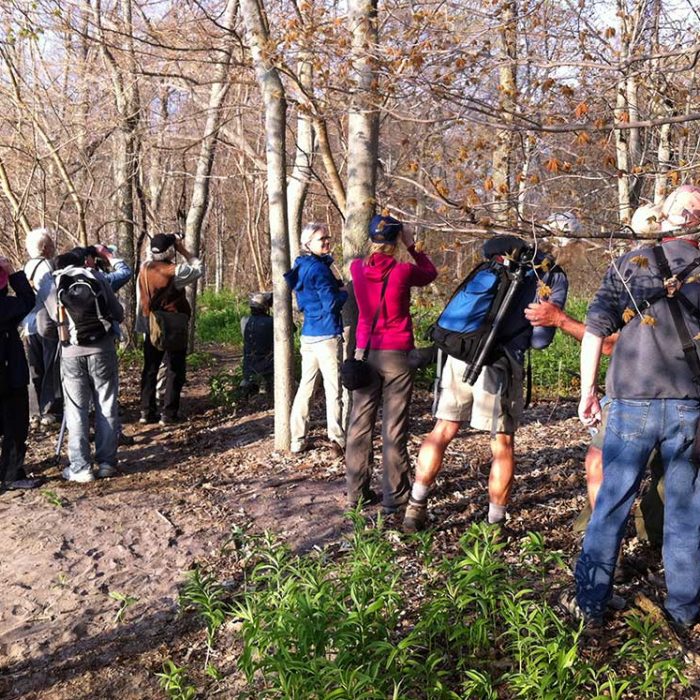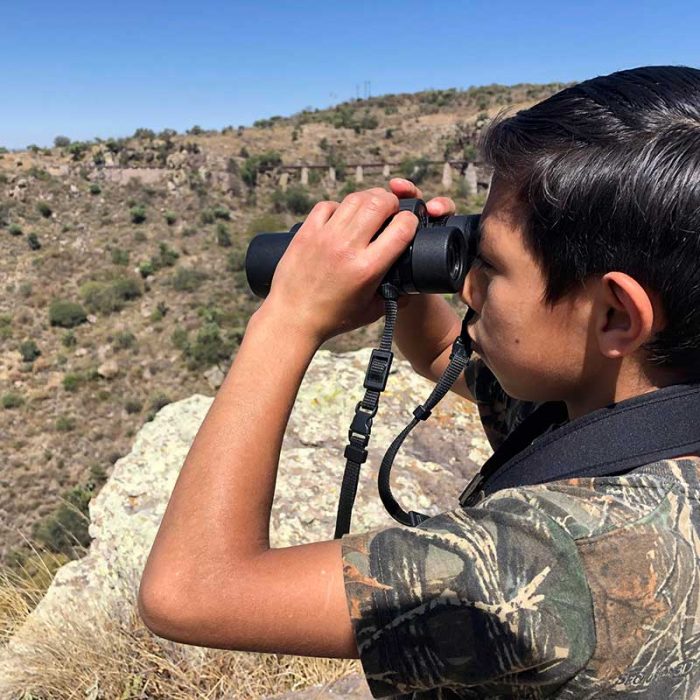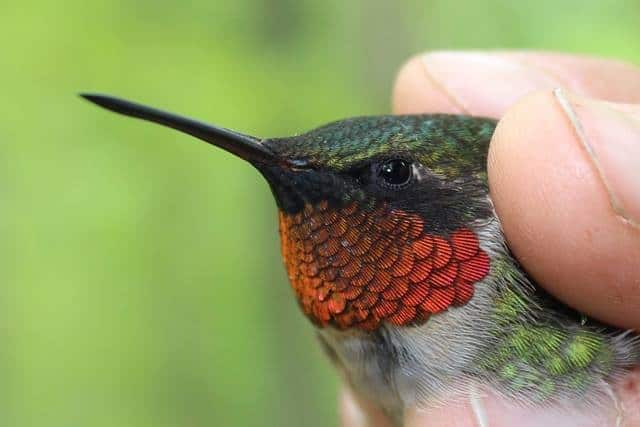Black-throated Green Warbler. Photo by Sumiko Onishi 2018
The first two weeks of September saw extremes of weather on Pelee Island, from still, humid days that left PIBO staff prostrate under the heat to cool temperatures and high winds that were a literal breath of fresh air, breathing new life into the migrant birds and insects.
The increased bird activity from the end of August continued into the beginning of September. The diversity of bird species remained high with between 50 to 60 species being observed each day. The banding station settled into a routine, with Veerys and Swainson’s Thrushes being seen and captured in ones and twos throughout the morning, while mixed flocks of warblers drifted through the netting area only occasionally. Magnolia Warblers were common, along with American Redstarts and Chestnut-sided Warblers. Hundreds of warblers were seen on Fish Point on September 2nd but were flying too high and too fast for many of them to be identified. A few Black-throated Green, Nashville, and Blackburnian Warblers were spotted, among others.
The heat wave continued and by September 4th bird activity was slowing down, though the diversity of species seen remained consistent. Fewer individuals were seen and the banding station remained quiet for the next two days. The temperature dropped on September 6th by less than five degrees Celsius, but the difference felt considerable! At the same time, the wind switched to the north-east, which seemed promising, but the total number of species observed remained about the same as it had been. The only obvious difference lay in the huge hordes of biting stable flies that now covered both Fish Point and PIBO’s census-taker!
Still, with the cooler temperatures and the change in wind direction, it seemed likely that the next day would see an increase in migration activity. September 7th began deceptively slowly, with the usual Veerys and Swainson’s Thrushes banded, but in the late morning several large mixed flocks of warblers came flying through the netting area so that by the time nets closed at 12:30 p.m., 86 birds had been banded of 17 different species. Most of them were Swainson’s Thrushes and Magnolia Warblers, but good numbers of Ovenbirds and Yellow-breasted Flycatchers were caught as well, along with the first Grey-cheeked Thrush and Purple Finch of the year. Rob Tymstra helped out by doing the daily census and was rewarded for putting up with the stable flies by the sight of a Hudsonian Godwit out on the tip of Fish Point – an exceedingly rare visitor to Pelee Island.
Hudsonian Godwit. Photo by Rob Tymstra 2018
On September 8th the northerly wind continued, but with gusts of up to 20 knots, it was much too strong to be pleasant. Not many birds were seen on the census, and in the netting area, the mist-nets were opened for only a few hours before it was judged that the wind was too strong to capture birds safely. Conditions on September 9th were similar, and no banding was carried out – nevertheless, it was an active day for birds, with many species of warblers seen including Ovenbirds, Black-throated Blue Warblers, and Bay-breasted Warblers. Five Northern Parulas were seen on the census. It was apparent that the strong winds had obliged them to put a halt to their migration – and the birds weren’t the only ones who found Pelee Island a convenient place to wait out the inclement weather…
Monarch Butterflies at Fish Point. Photo by Sumiko Onishi 2018
During the census on September 8th, over a thousand migrating monarch butterflies were counted at Fish Point. A dazzling array of them filled the sky over the tip and the lake, and huge roosts clung to the branches of the trees. This was by far the largest number of monarch butterflies counted by PIBO in recent years, and greatly exceeds the total number of monarch butterflies that were seen during the entire fall season in 2017. The roosts remained on September 9th when the weather was still rough, but once the wind dropped overnight the monarchs lost no time in moving on. Hundreds of them were counted in the following days but they were all actively migrating and did not form roosts. By September 12th only 30 monarch butterflies were seen on census – a respectable number, but a far cry from the spectacle that had been enjoyed just a few days before.
After the strong winds and rain PIBO had its busiest day of banding so far this season, with 93 birds banded of 14 species on September 11th. Most of them were Swainson’s Thrushes, but more Grey-cheeked Thrushes were banded as well. Evidently, they were part of the latest wave of migrants to reach the island, which also included the season’s first Western Palm and Pine Warblers. PIBO staff were not the only ones interested in capturing the songbirds that fluttered and fed among the rain-soaked leaves and branches, though – birds of prey were noticeably more active and numerous than they had been previously. Sharp-shinned Hawks swooped back and forth chasing the Common Grackles; two young Merlins returned repeatedly to a favourite perch above the banding station; and an incautious young Cooper’s Hawk came dashing through the netting area and struck one of PIBO’s mist-nets. It flew out again almost immediately, but not before ripping a large hole in the net that had to be repaired before banding could continue!
The north-easterly winds continued for the next two days, but bird activity remained subdued. The temperature began to climb again on September 15th, and so did the numbers of Sharp-shinned Hawks: thirty-five were seen on the census, and one was captured at the banding station. This had a predictably depressing effect on the songbirds in the area, and only three species of warbler were recorded: Magnolia, Black-and-white, and Blackpoll Warbler. There are still two weeks to go in September, though, and the possibility still remains that Pelee Island will enjoy another wave of warbler species before they are replaced by the migrating Golden-crowned and Ruby-crowned Kinglets in October.









